- Telling Food Stories through Travel: Photography Tips Using the Canon PowerShot V1
-

Melbourne based food and product photographer, Jacob Manfred specialises in photographing food, drinks, and branded products – bringing colour, texture and story to every frame.
When he’s not behind the camera, he’s teaching photographers how to master lighting, refine their style, and turn creativity into a career. Jacob is also a dog dad with a caffeine habit and a gift for dunking croissants in cappuccinos.
“My commercial style of photography is bold, sharp and colourful. But when I’m travelling, I like to loosen up my approach and focus more on story- telling. For me, nothing beats chasing light - a blue sky with warm sun tones makes photos feel so much more appealing.
Food photography became my passion because I’m a huge foodie. Good food makes me happy, and when I first started photographing cafes and restaurants in 2018, it felt rewarding to help hospitality businesses get seen online through my lens. That grew into studio food photography, and now I work with both hospitality venues and supermarket brands to create visuals that make people feel hungry or thirsty.
Japan is one of the most inspiring places for food photography. In so many restaurants, you can see the chefs cooking right in front of you, taking pride in every detail.
For this trip, the thing I loved most was how practical the Canon PowerShot V1 was. It slipped into my pocket, switched on within seconds, and gave me that nostalgic zoom function I loved using for both stills and 4K video. Shooting RAW files gave me full control in post- production, while the wide lens and flip- out screen made it easy to capture everything from selfies to behind-the-scenes shots.”
When telling a food story while travelling, I always use a simple three- photo framework: capture the maker, the crafted moment, and the setting. These three layers build a narrative that helps the viewer feel like they’re right there with you and is an easy formula for anyone learning beginner food photography techniques.
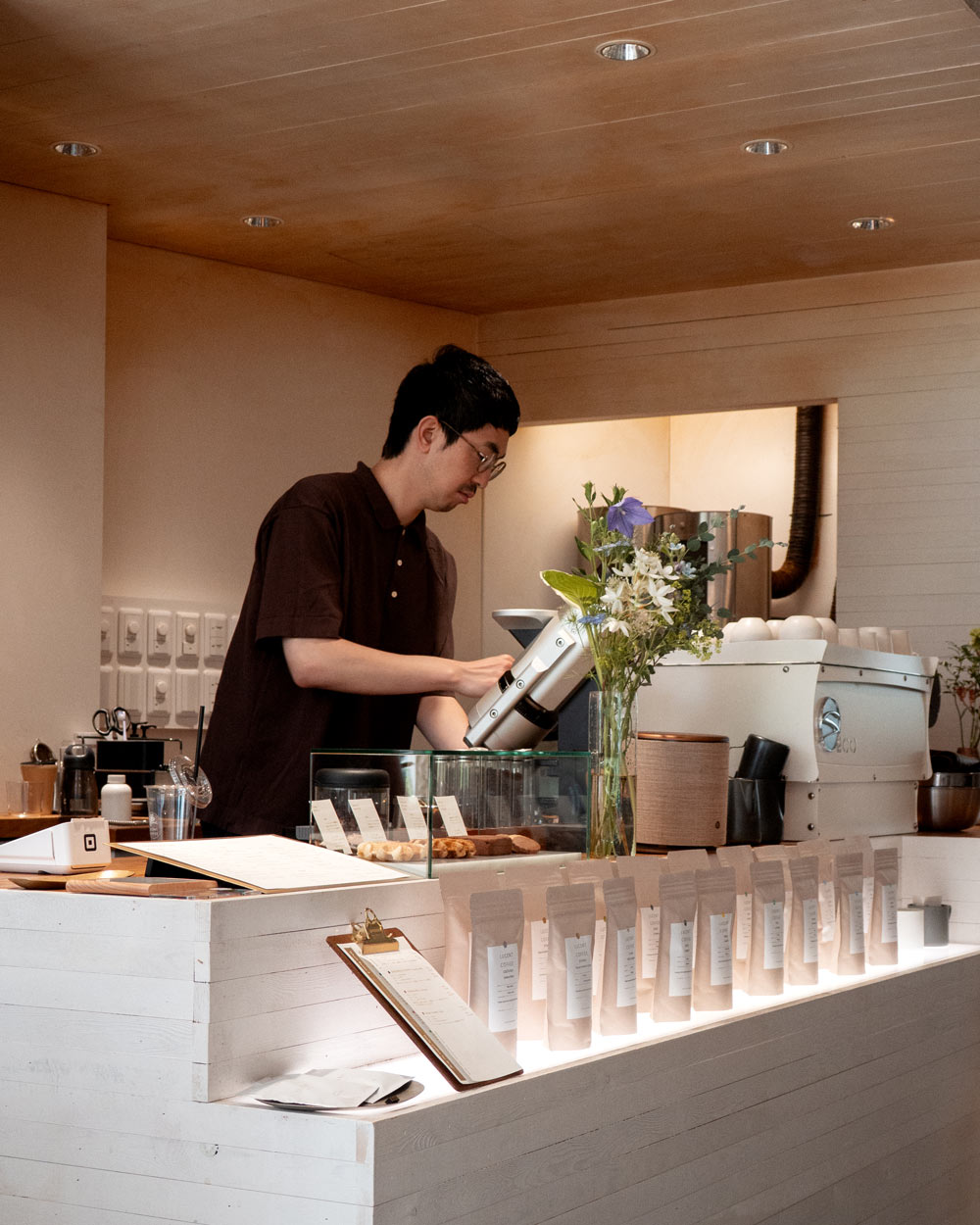
The story always starts with the maker. On this trip, I captured a candid shot of a barista in his element, carefully crafting coffee. The framing was important here - I wanted to show not just him but also his surroundings. By sitting down and waiting for my order, I could stage the frame without him noticing, using the Canon PowerShot V1 to zoom and crop subtly. This meant I could capture a natural, unposed moment without disrupting the flow of his work.
Photographing food is one thing, but photographing the people who make it adds a whole new layer to the story. It helps the viewer imagine the experience more vividly - the movement of hands, the focus in their expression, the quiet ritual of preparation. It humanises the image and gives authenticity, grounding the dish in the context of craft and care.
Settings: f/4.5 - 22mm - ISO 1000
How/When to Use It: Ideal in kitchens, street markets, or workshops where hands are moving and details matter. Look for natural gestures rather than posed shots, and use framing to show both the person and their environment.
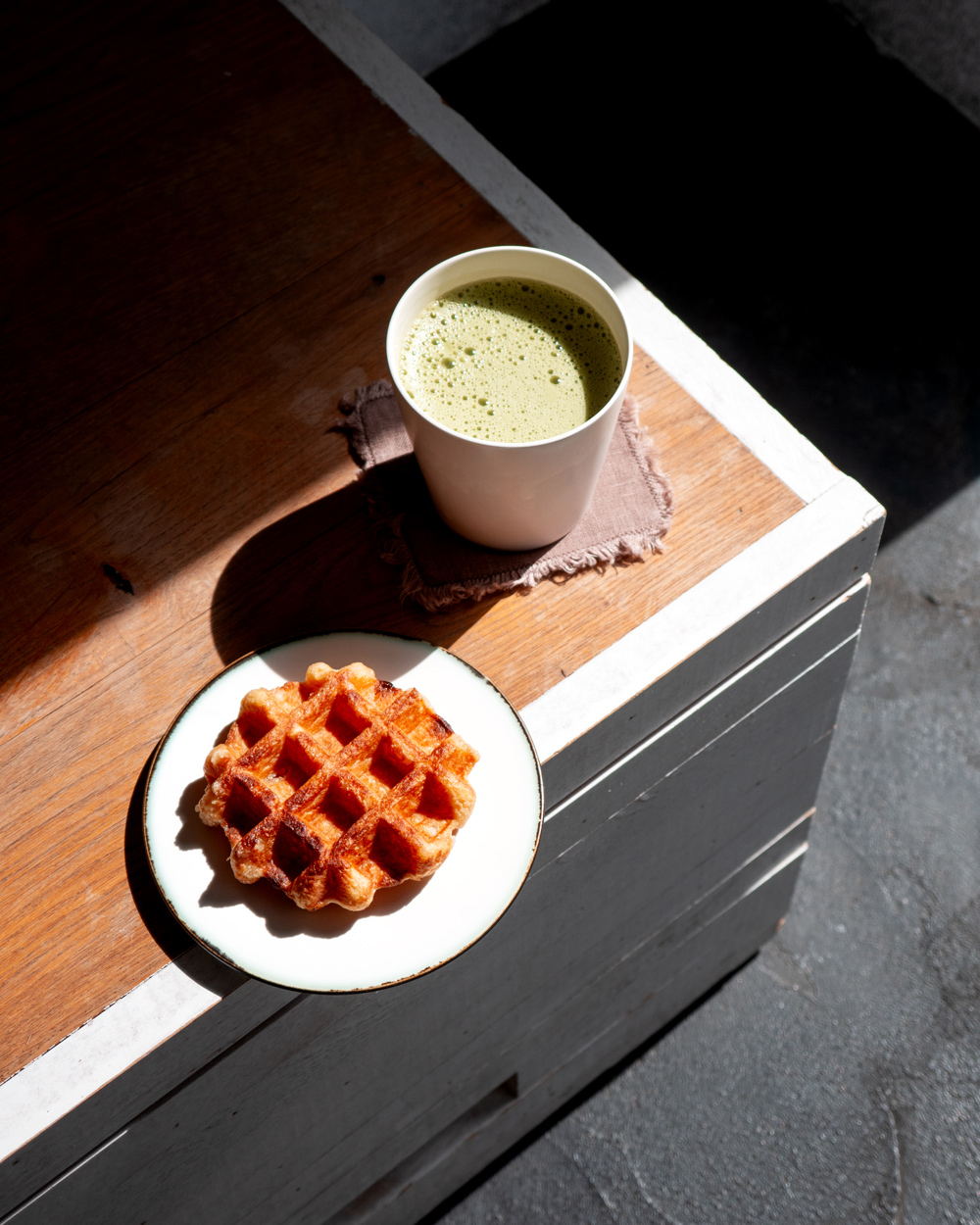
The second shot focuses on the food itself – a freshly made matcha and a waffle staged by a sunlit café window. The goal here was to make the viewer imagine themselves in that exact moment: the warmth of the sun, the comfort of a wooden bench, and the perfect pairing of coffee and food.
I positioned the drink in the top right and the waffle slightly lower on the left, creating balance without it feeling staged. This composition feels natural, almost as though the viewer is just about to reach out for that first sip. The warm backlighting was deliberate too – by shooting from the shadow side, I could reveal the latte’s foam texture and the crispness of the waffle. Light, placement, and props all worked together to build an inviting scene that communicates mood as much as flavour.
Settings: f/4.5 – 26mm – ISO 100
How/When to Use It: Perfect when plating or serving food. Look for natural light and simple props to frame the moment, then use back or side lighting to emphasise textures. Motion – like pouring, garnishing, or slicing – can add drama and make the viewer feel part of the scene.
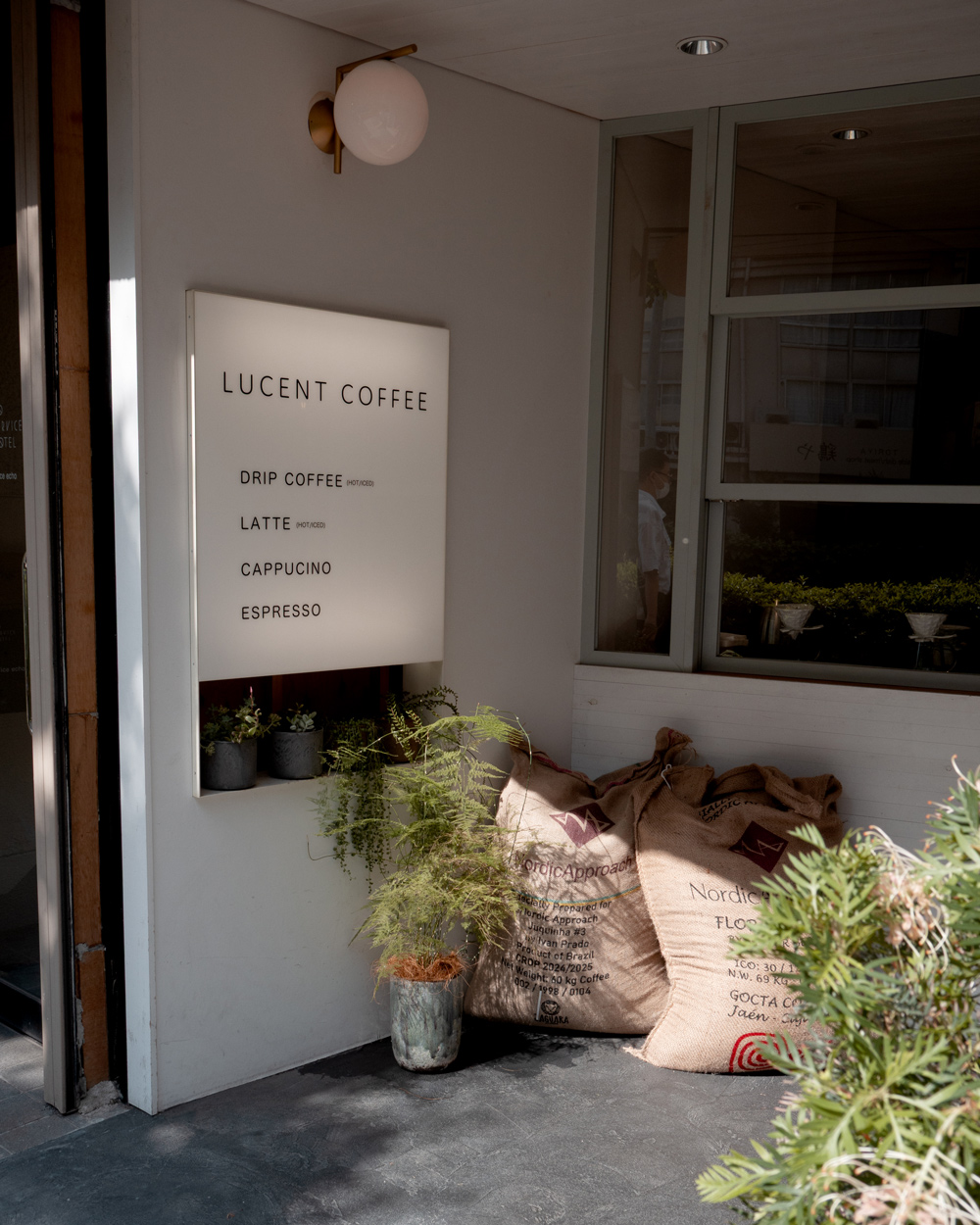
Finally, I capture the setting - the café or environment; detailing where the story unfolds. For this story, I photographed the shop front with coffee bean bags lit by sunlight, minimal signage, and a pared- back menu. The coffee bean bags placed in the window, with light hitting them just so, created a visually striking scene. The minimal signage, with only four coffees listed, added intrigue - enough detail for the viewer to begin picturing what the café might be like inside, without me needing to reveal everything.
This kind of framing allows the imagination to do some of the storytelling. By capturing the exterior, I give the audience the missing puzzle piece: the place that ties together the food and the people. Even without showing the interior, the light, the signage, and the restrained detail give a sense of mood and atmosphere. It completes the story, letting viewers piece together what it might have felt like to walk through those doors.
Settings: f/5.6 - 16mm - ISO 100
How/When to Use It: Use when you want to establish mood. Wide shots of full tables, bustling stalls, or shopfronts work well. It’s especially effective for transporting the viewer into the space, tying food and people back to their environment.
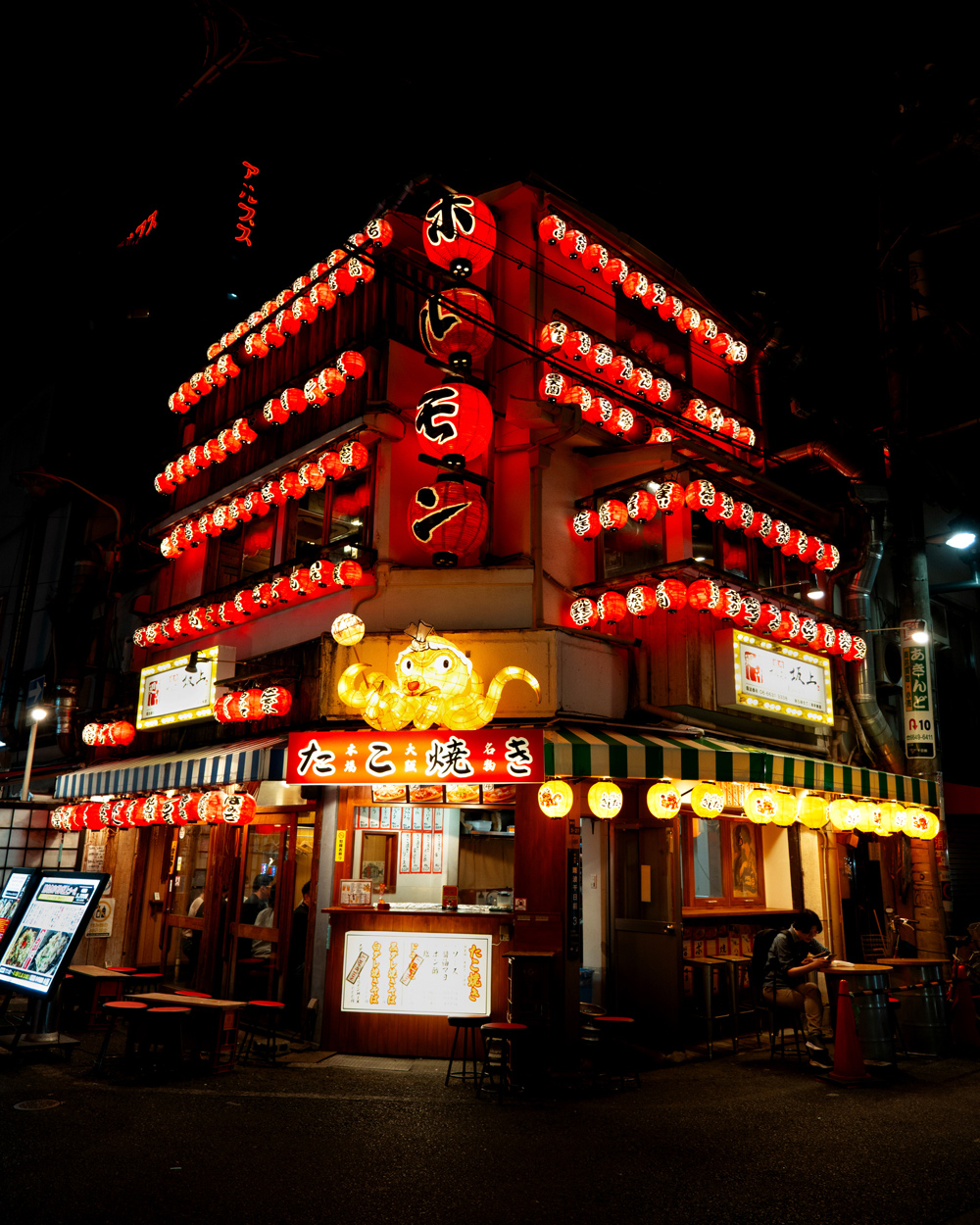
One of my favourite moments in Japan was inside a 7/11. I opened the fridge door and saw rows of brightly coloured drinks stacked with obsessive neatness. It was such an ordinary scene, but when I framed it, it became a wall of colour and rhythm - a slice of Japanese culture captured in a single shot.
The order, the precision, the way even a convenience store fridge felt curated - it told a story beyond the drinks themselves. Our eyes love order, so patterns like this instantly catch attention and feel satisfying. In food photography, repetition adds rhythm and design; in travel photography, it highlights cultural details like lanterns strung across a street or stacks of plates at a market stall. By framing tightly, you isolate the pattern and let it dominate the image, turning the everyday into something visually striking.
Shooting at 26mm gave me just enough width to capture most of the fridge detail while still allowing light in without pushing ISO too high. Too much ISO would risk digital noise, which can break the crisp satisfaction of a clean, repetitive image. Patterns shine best with consistent lighting, and even the smallest break in repetition (like one can turned the wrong way) can add tension and make the photo even more engaging.
Settings: f/4.5 - 26mm - ISO 125 - Shutter 1/1000
How/When to Use It: Look for repetition in buffets, stacked trays, or even ordinary spaces like a fridge. Works best when you frame tightly and let the pattern dominate. Clean light makes repetition stand out, while little breaks in the pattern add intrigue.
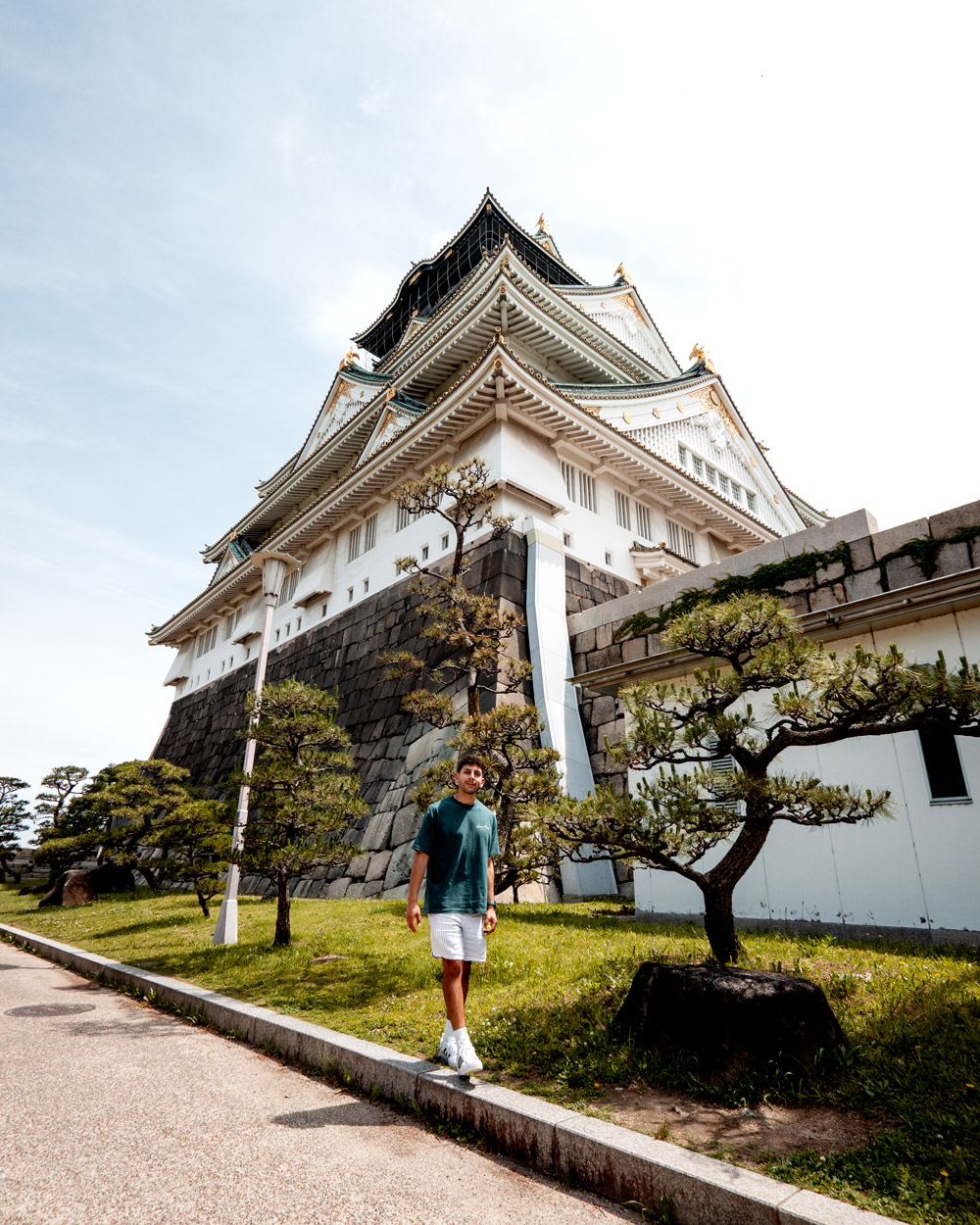
When photographing a castle in Japan, I didn’t just want a postcard- style shot. Instead, I walked naturally through the frame, letting my movement bring the image to life. Shooting wide gave me the ability to capture the full scale of the landmark, while the simple act of walking added energy, scale, and relatability. The result wasn’t just a static image of a castle, but a living moment that felt like part of a bigger journey.
By shooting wide and adding motion, you transform still shots into scenes that feel human. The landmark remains grand and timeless, but the moving figure brings scale and context, shifting the photo from a static postcard into a memory. Shooting at 8mm gave me the ultra- wide perspective I needed, while f/4 allowed both the castle and figure to stay sharp. Bright daylight helped freeze the moment cleanly at ISO 100 with no noise.
Settings: f/4 - 8mm - ISO 100 - Shutter 1/800
How/When to Use It: Perfect for wide spaces like castles, temples, food halls, or open streets. Works best in daylight, with someone moving naturally through the frame. Adds scale, energy, and life to otherwise static travel or food environments.
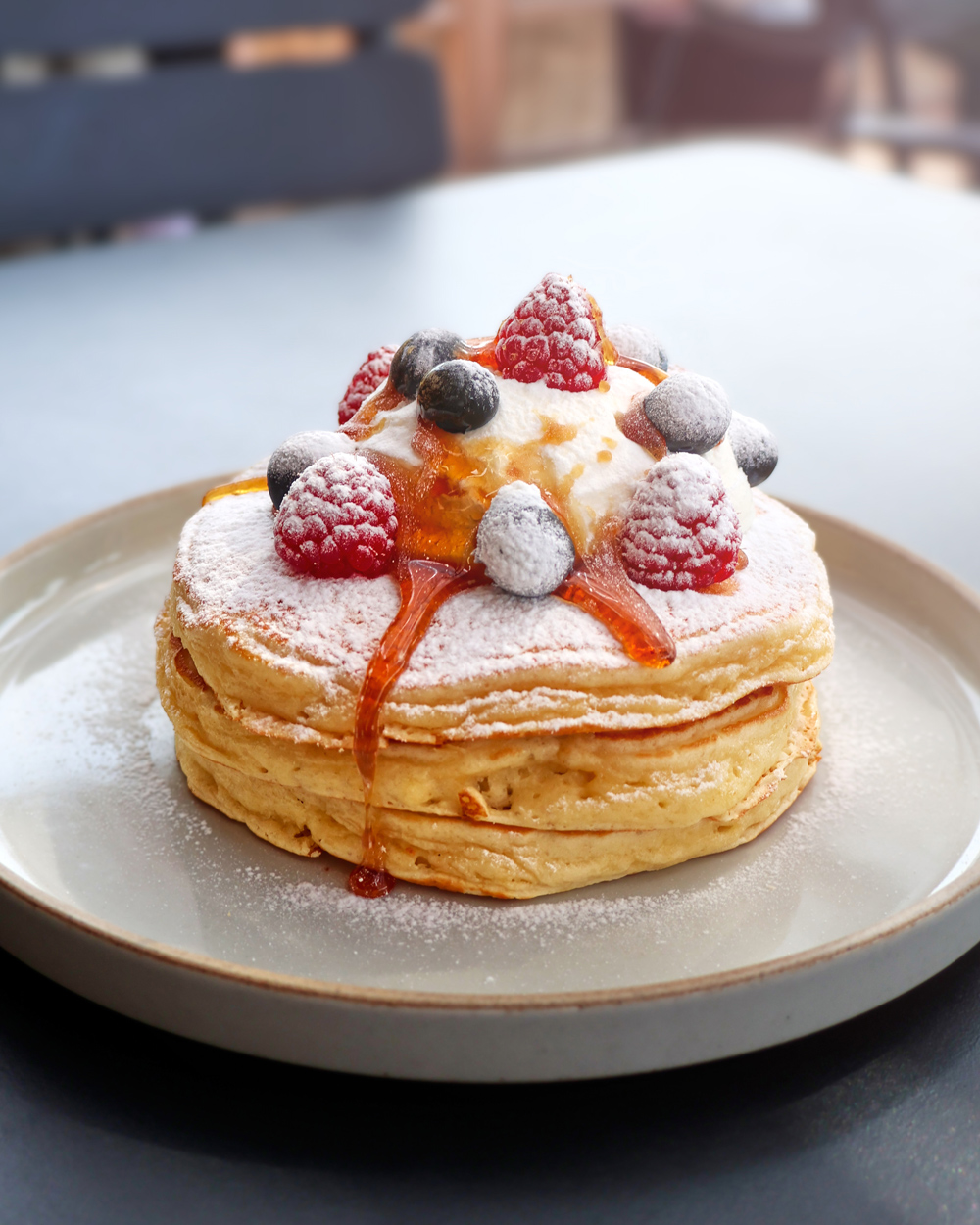
One morning in Kyoto, I ordered a stack of pancakes and decided to capture the maple syrup pour. I switched to burst mode and fired continuously, freezing the exact moment the syrup ran down the side. That single drip became the hero shot - indulgent, dynamic, and mouth- watering.
This technique turns static food shots into living, sensory experiences. Shooting at 19mm gave me a wide perspective to fit in the whole stack while keeping enough closeness for detail. f/4.5 kept the pancakes sharp but softened the background so the syrup stood out, while a fast shutter speed froze the motion without blur. ISO 100 kept the image crisp and noise- free in natural light.
Capturing these fleeting movements makes food photography feel alive. It’s no longer just a dish on a plate - it’s an unfolding experience. Whether it’s syrup, olive oil, melted chocolate, or even a cocktail pour, burst mode ensures you don’t miss that perfect frame. The result isn’t just a photo of food, but a moment that feels indulgent, anticipatory, and real.
Settings: f/4.5 - 19mm - ISO 100 - Shutter 1/320
How/When to Use It: Use when photographing food or drinks with natural movement - syrup, honey, sauce, or cocktails. Works best in good light with a simple background so the action becomes the star. Burst mode helps capture the perfect drip or pour without missing it.
The Canon PowerShot V1 was the perfect travel companion for food photography. Its pocket size meant I could carry it everywhere and shoot discreetly. Features like the flip- out vari- angle screen and RAW capture gave me creative flexibility, while the zoom function helped me reframe without drawing attention.
For creators starting out, I recommend pairing it with a small tripod or lightweight microphone for stability and audio if you’re filming. The PowerShot V1 is versatile, quick to use, and makes professional storytelling possible even on the go.
This trip reminded me that food photography is as much about the people and places as it is about the dishes. A simple three- photo framework - the maker, the moment, the setting - helps you tell a complete story anywhere in the world.
If you’re starting out in travel or food photography, my advice is to experiment, chase light, and don’t be afraid of imperfection. With the right eye and tools like the Canon PowerShot V1, you can transform ordinary scenes into stories worth sharing.
See more of Jacob’s work here:
Jacob Manfred Food Photographer Melbourne | Transform Your Visuals Today
Melbourne Food & Product Photographer (@jacobmanfred)
Jacob on TikTok
Jacob Manfred on YouTube

Compare Canon EOS C50, R5 C & R5 Mark II. Explore 4K/8K, RAW, autofocus & design to find the right camera for film, photo & hybrid creators.

We break down their key specs, features, and best use cases to help you pick the right one.

Learn out how to quickly set up your camera to shoot content that is TikTok ready